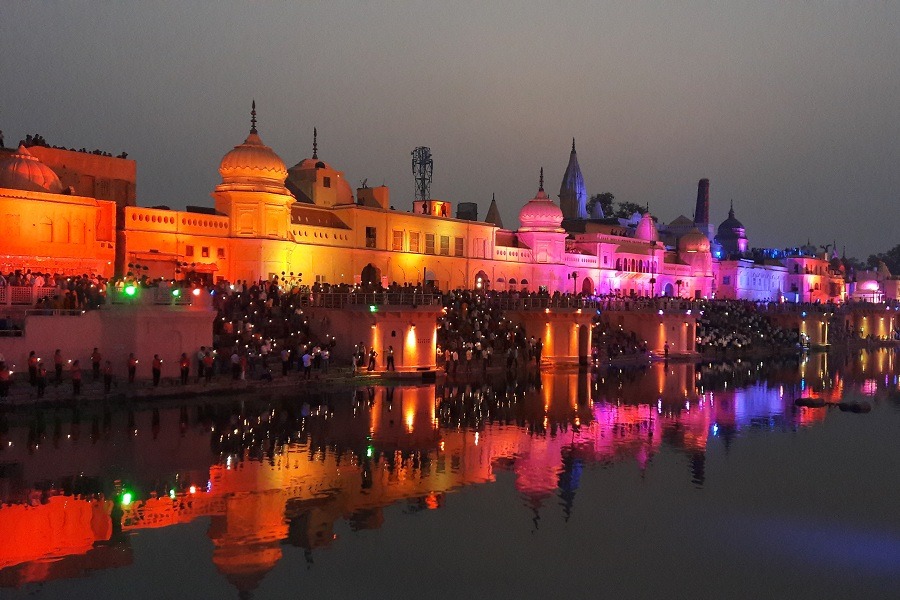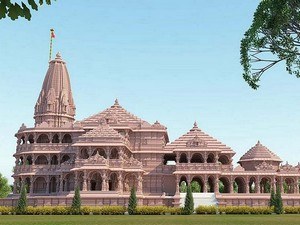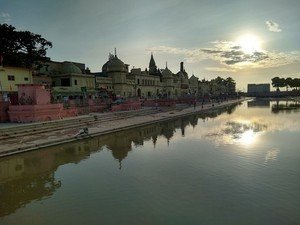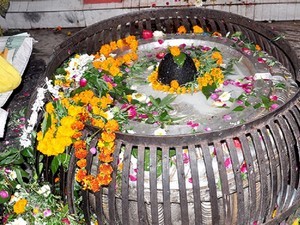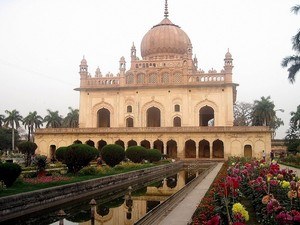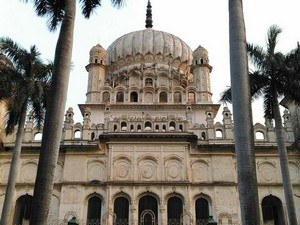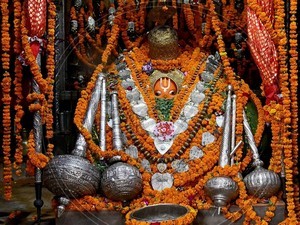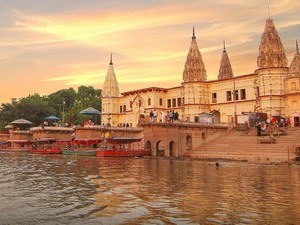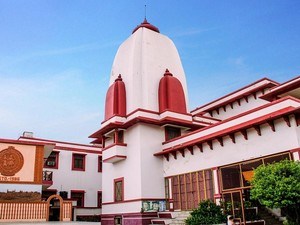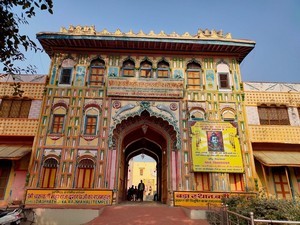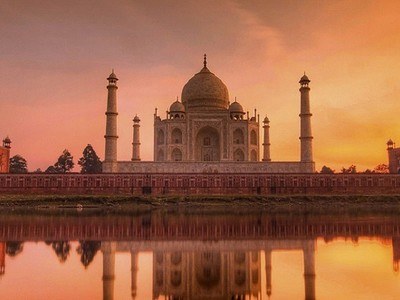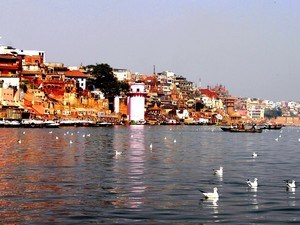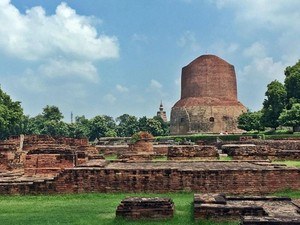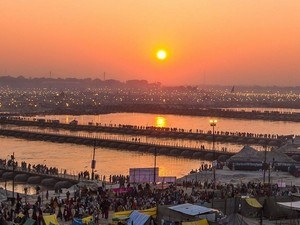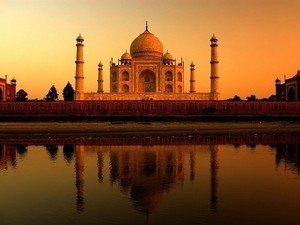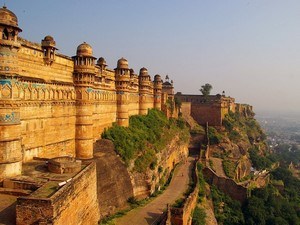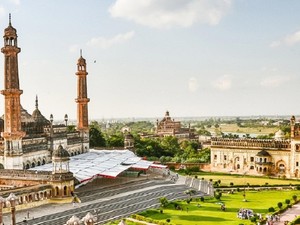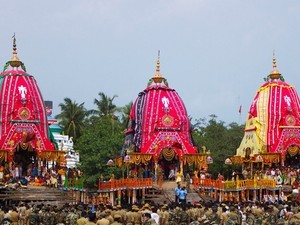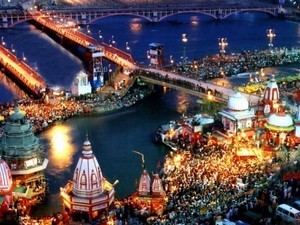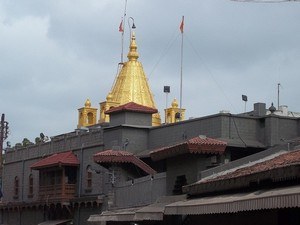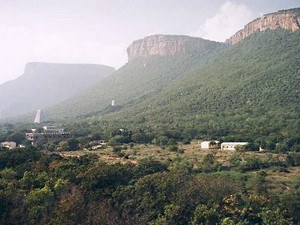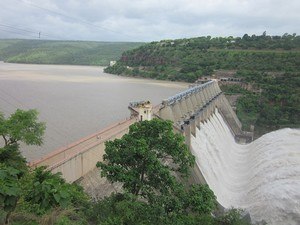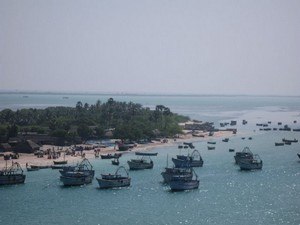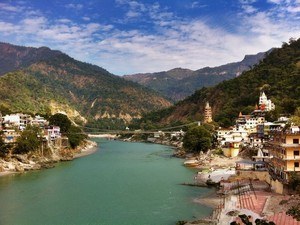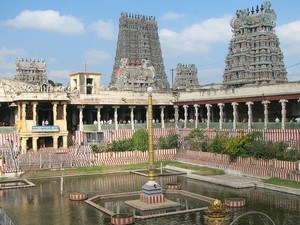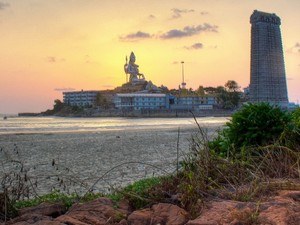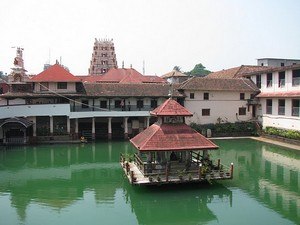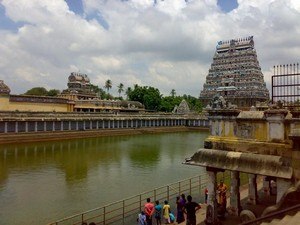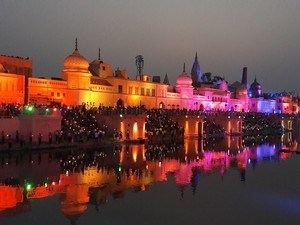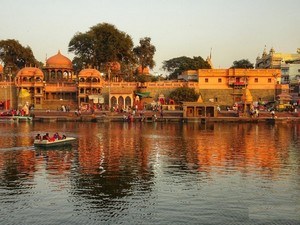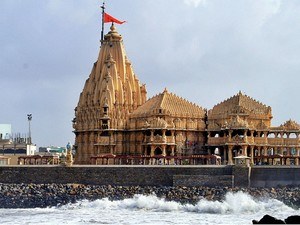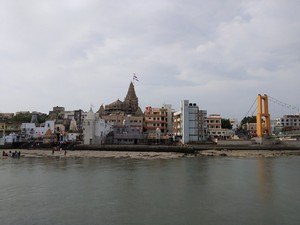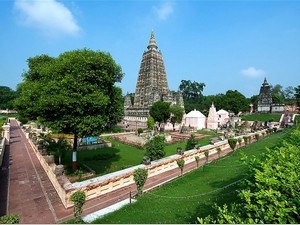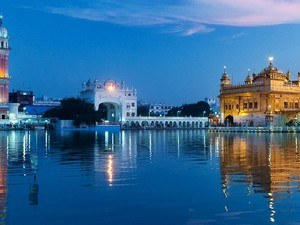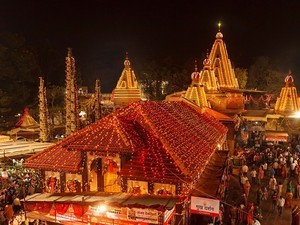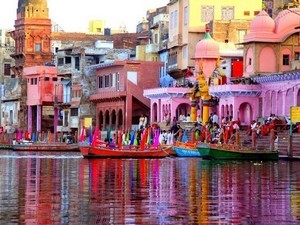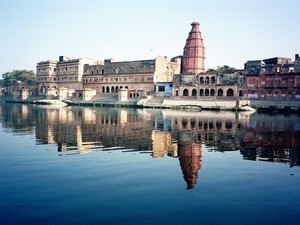AYODHYA TOURISM | TEMPLES, PLACES TO VISIT & TRAVEL GUIDE TO AYODHYA
![]() Pilgrimage
Pilgrimage
About Ayodhya
 Country: India | State: Uttar Pradesh
Country: India | State: Uttar Pradesh
 #100 of 15 Places to visit in Uttar Pradesh
#100 of 15 Places to visit in Uttar Pradesh
 Ideal Trip Duration: 1-2 Days
Ideal Trip Duration: 1-2 Days
 Nearest City to Ayodhya: Lucknow (140 Kms)
Nearest City to Ayodhya: Lucknow (140 Kms)
 Best Time to Visit Ayodhya: October to March
Best Time to Visit Ayodhya: October to March
 Peak Season: November to March
Peak Season: November to March
At a distance of 135 km from Gorakhpur, 140 km from Lucknow, 148 km from Raebareli, 168 km from Pragyaraj (Allahabad), 216 km from Varanasi, 224 km from Kanpur, 397 km from Patna, 470 km from Agra, and 670 km from Delhi, Ayodhya is a holy city situated on the banks of holy river Saryu in the Indian state of Uttar Pradesh. It is the administrative headquarters of Faizabad district and among the must-include places in Uttar Pradesh tour packages.
Ayodhya or Awadh is the birthplace of the Hindu deity, Lord Ram Shri Ram, the seventh avatar of Lord Vishnu. This holy city has been regarded as the first one of the seven most important pilgrimage sites for Hindus, and among the top places to visit near Lucknow. It is believed that a temple stood at the supposed birth spot of Rama, which was demolished by the orders of the Mughal emperor Babur and a mosque erected in its place. In 1992, the dispute over the spot led to the demolition of the mosque by Hindu mobs, who aimed to rebuild a grand temple of Rama at the site. In October 2019, a bench of five judges of the Supreme Court ordered the land to be handed over to a trust to build the Ram Temple. An alternate 5 acres of land was also given to the Sunni Waqf Board to build a mosque. The construction of the Ram Mandir commenced in 2020 and is the must-include in Ayodhya tour packages.
According to the ancient Hindu epics, Ayodhya was the capital of the legendary Ikshvaku kings of Kosala, including Rama. Scholars generally agree that Ayodhya is identical to the town of Saketa, where the religious leaders Gautama Buddha and Mahavira visited and lived in the city. The Jain texts also describe it as the birthplace of five Tirthankaras namely, Rishabhanatha, Ajitanatha, Abhinandananatha, Sumatinath, and Anantnath, and associate it with the legendary Bharata Chakravarti. Post the ancient Buddhist establishment in 600 BC, the present Ram Janmabhoomi was a Chinese Buddhist hometown with over 100 sacred sites in the 5th century. The Kanauj kingdom arose in Ayodhya, then called Oudh, during the 11th and 12th centuries CE. The region was later included in the Delhi sultanate, and in the 16th century, the Mughal Empire. The land was an active British colony from the 19th century to the mid 20th century.
Being closely tied with Hindu mythology, Ayodhya is regardes as one of the popular places of pilgrimage in India. In Ayodhya, one can experience spirituality and serenity amidst several religious sites that are like time capsules of the magnificent times of Lord Ram and the Ramayana. Ram Janam Bhoomi, Ram ki Paidi, Hanuman Garhi, Nageshwarnath Temple, Treta Ke Thakur, Mani Parbat, Dasrath Bhavan, Tulsi Smarak Bhawan, Jain Temple, Birla Temple, Gulab Bari, Moti Mahal, Kanak Bhawan, Guptar Ghat, and Bahu Begum ka Maqbara are some of the top Ayodhya places to visit.
About 151 km from Ayodhya, Chaudhary Charan Singh International Airport, Lucknow is the nearest airport that has direct flights from all major cities in India such as Delhi, Mumbai, Kolkata, Patna, Bangalore, Raipur, Patna, Ahmedabad, Chennai, Hyderabad & Pune. Ayodhya Junction Railway Station is connected by daily trains to the cities in Uttar Pradesh like Lucknow, Kanpur, Gorakhpur, Allahabad, Varanasi, and Delhi along with Bangalore, Mumbai, Pune, Hyderabad, Bairelly, Jamshedpur, Chhapra, Farrukhabad, Chennai, Rameshwaram, Darbhanga, Ahmedabad, Muzaffarpur, Surat, Kolkata, Jammu Tawi, Kota, Patna, Bhopal, Dhanbad, Kota, Surat, Udaipur, and Jaipur. Ayodhya is well connected by bus from the neighboring cities in the state.
Although visited by pilgrims throughout the year, the holy city of Ayodhya attracts devotees from all over the world on 'Ram Navami', the day of the birth of Rama. Ram Navami is celebrated for 9 days with great pomp in the Hindu month of Chaitra, which falls between March and April. The festival is observed with poojas, fasting, and feasting on Ram Navami. Maha Shivratri, Diwali, & Shravan Jhula Fair are other popular Hindu religious festivals celebrated in Ayodhya.
The best time to visit Ayodhya is from October to March. Although it gets fairly cold during the winters, this is the best time when you can explore the holy city without getting tired. The summers are dry, sunny, and humid, so better to avoid traveling to Ayodhya around this time. Monsoons are moderate with a decent amount of rainfall.
None

